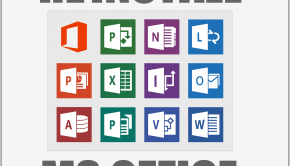Reinstall Windows Troubleshooting
Reader Question:
“Hi Wally, I am having problems with Reinstall Windows and wondering how to fix it?” - Alex R., USA
Before addressing any computer issue, I always recommend scanning and repairing any underlying problems affecting your PC health and performance:
- Step 1 : Download PC Repair & Optimizer Tool (WinThruster for Win 10, 8, 7, Vista, XP and 2000 – Microsoft Gold Certified).
- Step 2 : Click “Start Scan” to find Windows registry issues that could be causing PC problems.
- Step 3 : Click “Repair All” to fix all issues.
Setting up weekly (or daily) automatic scans will help prevent system problems and keep your PC running fast and trouble-free.
Wally’s Answer:
Overview of Reinstall Windows
While the reliability and capabilities have allowed Windows to become the most widely used operating system worldwide, all versions have inherent problems that can cause a variety of system malfunctions.
The more often software is added and removed; the more likely it is for these problems to occur. Alterations in the hardware such as changing the keyboard or getting a new mouse can have a similar effect.
Windows has its own diagnostic program for troubleshooting, and there are many more tools available for download, but it is an accumulation of software problems that is the usual culprit for slowly bringing performance down. The longer that any version of Windows remains in use, the greater the likelihood that there will be portions of it that have become corrupted.
Reinstalling Windows can often eliminate the quirky behavior, slowdowns, and stops that may plague aging software. The process is sometimes referred to as refreshing though it will not always mean starting afresh. While it won’t always solve the problem, it is still worth a try when problems grow severe.
What Problems are Associated with Reinstall Windows?
The persistent crashing of the system is the most frequently cited reason for reinstalling Windows.
Make sure there are no problems with the hardware before attempting to repair the software. Physically inspect the system to make sure there are no obvious trouble spots that could cause electrical problems such as bare wires. If an installation reinstall disc is employed, check it as well for scratches and smudges.
It is always a good idea to have backups of everything in case disaster strikes. Sometimes when using Windows diagnostic or other tools, so many problems are encountered that it can be simpler and faster to reinstall Windows and see whether that does the trick.
Blue screens and black screens are always bad news when they appear. They are another widely cited reason for doing a reinstall.
Computers with multiple CDs and DVDs can become confused about where to search for files. By disabling the drives that are not in use, this problem may be resolved with an attendant pick up of speed in the machine.
A computer should also be scanned with an antivirus program before starting a reinstall, and this program needs to be disabled for reinstallation to be successful.
I Hope You Liked This Blog Article! If You Need Additional Support on This Issue Then Please Don’t Hesitate To Contact Me On Facebook.
Is Your PC Healthy?
I always recommend to my readers to regularly use a trusted registry cleaner and optimizer such as WinThruster or CCleaner. Many problems that you encounter can be attributed to a corrupt and bloated registry.
Happy Computing! ![]()

Wally's Answer Rating
Summary: Every Windows Wally blog post is evaluated on these three criteria. The average of all three elements determines an "Overall Rating" for each blog post.














